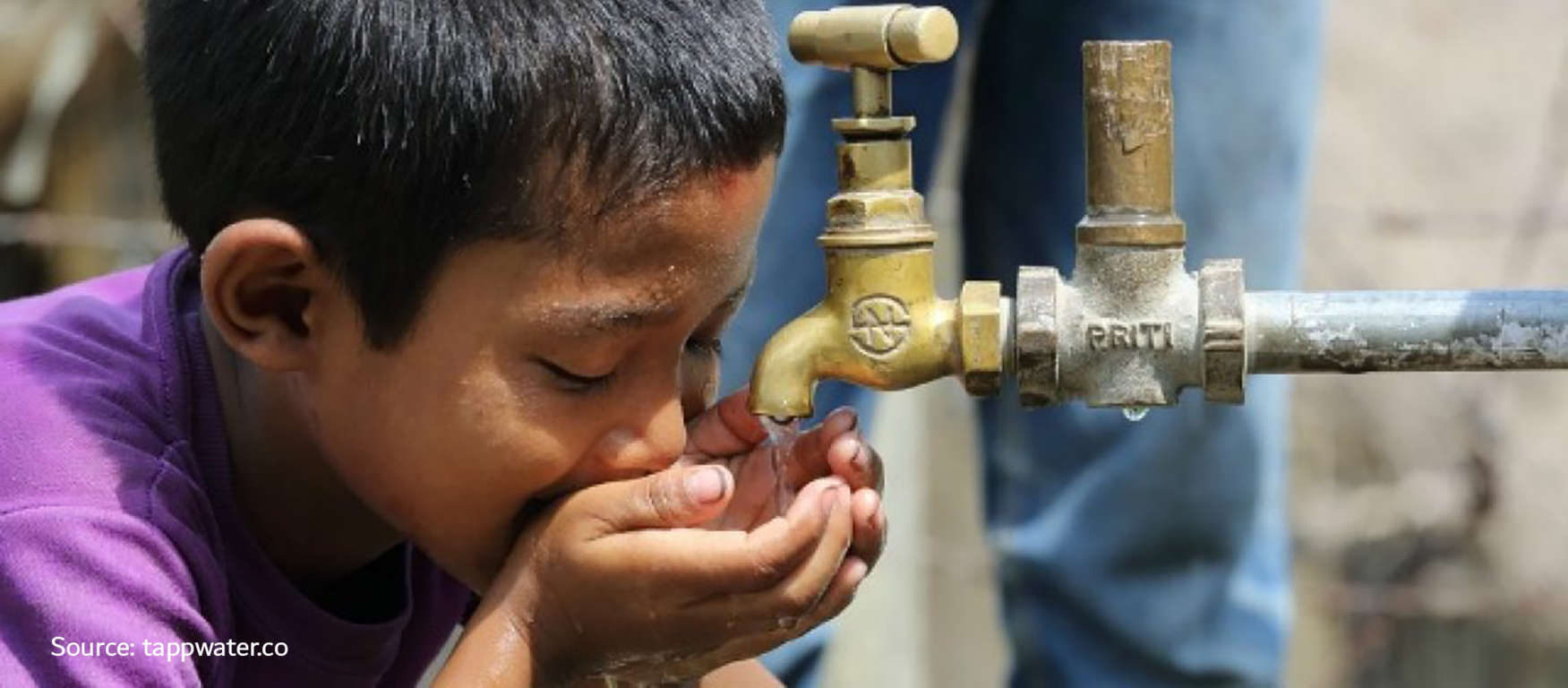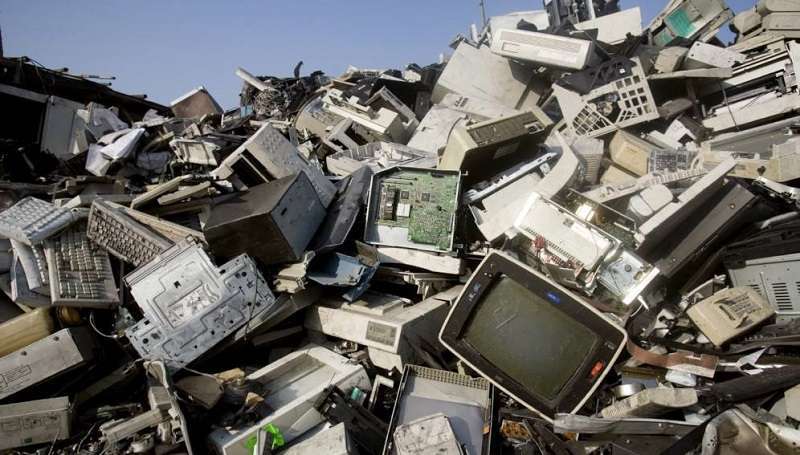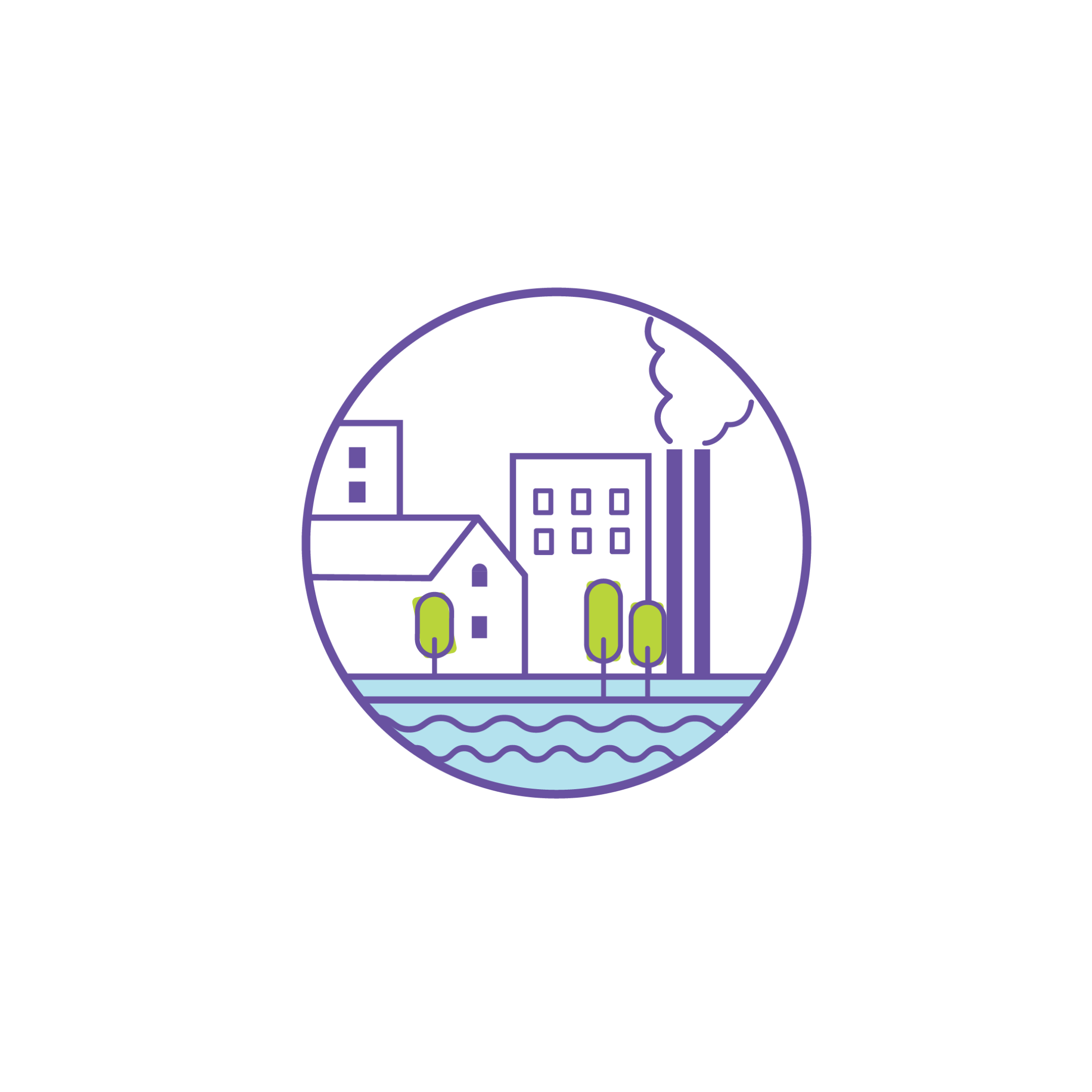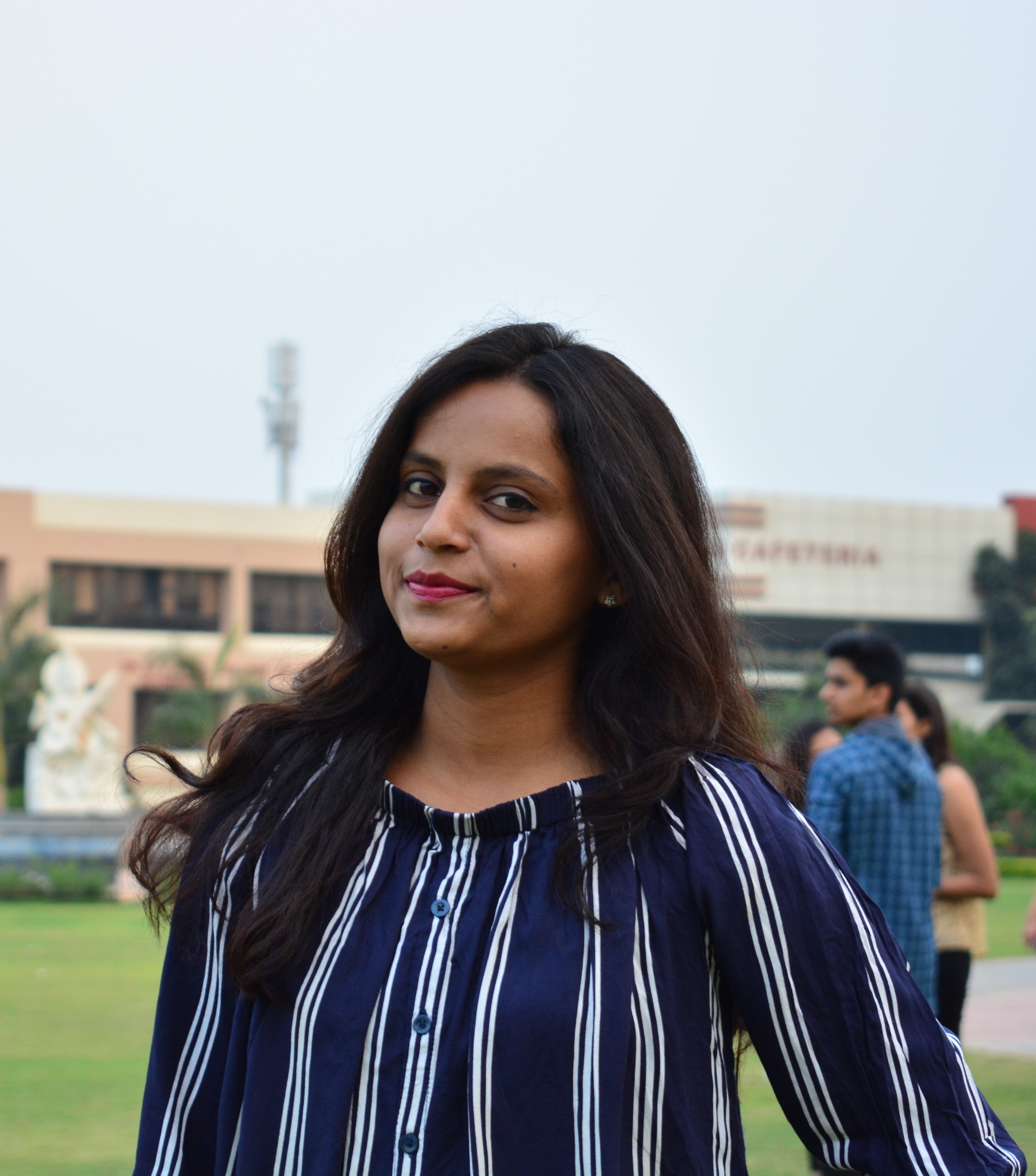URBAN HEAT ISLAND INNOVATIVE WAY TO REDUCE ITS EFFECT
INTRODUCTION:
Due to rapid urbanization and industrialization and urban development, the landscape, built up everything is continuously changing (Bhargava, Lakmini, & Bhargava, 2017). The changes happening in the open land, green lands are highly affecting the temperature of the region, and when a particular region experiences more temperature, than its surroundings then it is called the Urban Heat Island (UHI) [Figure 1 below]. The phenomenon of the difference in the ambient air temperature between the urban and the rural area is called Urban Heat Island (UHI) (Abdulibdeh, 2020).
Figure 1: Urban Heat Island (UHI) (Bhargava, Lakmini, & Bhargava, 2017)
Due to the increasing urbanization, the constant increase of the surface temperature is happening that is resulting in urban resource and energy flow alternation, and this is causing the reduced health condition of the individuals (Qian, Song, Yang, & Zheng, 2016). The paper reflects the UHI effects, impacts, causes, parameters, and ways to reduce its negative effects. So, to understand how the UHI can be caused and what are the major issues happening, what all other things can be affected by this UHI, and what can be done to reduce the UHI this study is needed.
AIM, OBJECTIVES, AND METHODOLOGY:
Aim:
The aim of this study is to –
- provide innovative and affordable ways to reduce the Urban Heat Island and its effects.
Objectives:
- To analyze the urban heat of the study area by doing land surface temperature (LST) analysis.
- To understand the built-up, green, and blue coverage of the study area.
- To understand the factors or causes of the UHI.
- To provide innovative proposals to cope up with the UHI (Cox, et al., 2006).
Methodology:
The following steps or methodology [Figure 2 below] have been undertaken or considered for this study to be done.
Firstly, the study about the Urban Heat Island has been done to understand what it is, factors, and causes of this so basically it is the preliminary study about the UHI.
Secondly, the study area has been selected and the preliminary study of the study area has been done where a detailed study of the study area has been carried out (described in detail in section STUDY AREA) in terms of demographics and socio-economic conditions, the major areas and lastly, the existing problems of the study area have been noted down.
Figure 2: Methodology of The Study (Author, 2021)
Next, a literature study (described in detail in section LITERATURE STUDY) via, research papers, articles, journals, and different policies has been carried out to understand the projects undertaken or any rules and regulations that may be violated in the study area, etc. And the aim and the objectives have been set up.
Lastly, Data collection from primary and secondary sources and analysis of the data has been done followed by providing the proposals and the recommendations.
As a part of the framework of analysis, after gathering the relevant data on land surface temperature analysis, understand the built-up, green, and blue coverage of the study area has been done.
SCOPE AND LIMITATION:
Scope:
There is plenty of scopes to study the urban heat island.
- Urban Heat Island is gradually increasing and has been observed all over the world over the last decades, which is affecting changes in the environment by affecting the micro-climate of the region (Al-Amin, et al., 2021).
- The increasing trend in urbanization can increase the scope of the study about the Urban Heat Island (Fotiadi, Mihalakakou, Paravantis, Stigka, & Tzavali, 2015).
For understanding the UHI effect the past trend study can also be done and some models can be made to study –
- Firstly, small-scale modeling that will study the parameters of a built-up or the region of a city in its environment and the modeling includes Energy Balance Model (simple one), Computational fluid dynamics (CFD).
- Secondly, the mesoscale modeling to study several hundred kilometers of area.
- Lastly the micro-scale modeling (Haghighat & Mirzaei, 2020).
Limitations:
The limitations of this Urban Island Heat study are –
- The monitoring system because the monitoring stations are limited and that’s why the failure chances are there for providing sufficient spatial details of UHI for land use planning and climate change research (Anniballe, Bonafoni, & Pichierri, 2014).
- To find the official dataset of the green and blue coverage area and making decisions regarding lowering the UHI effects (Al-Amin, et al., 2021).
- Due to the current restriction of COVID19, there is a lack of real-time data and that is the reason proposals have been given for the current situation.
LITERATURE STUDY:
Plenty of the literature study has been done where different research papers, journals, policies have been studied thoroughly. The concept of making cool cities by making positive impacts on UHI and developing sustainable solutions. The proper application of the green infrastructure and making the green corridors reduce the heating effect (Rehan, 2016). As per Bhargava, Lakmini, & Bhargava (2017) the increased consumption of land, resources available are a major cause of this UHI effect and planners must have to provide policy regarding the efficient and proper use of the available resources. UHI has some other effects on water quality, human health, pollution, etc.
The casual factors of the UHI are some controllable variables along with population and pollution [Figure 3 below] (Lall, Shetty, Singh, & Talwar, 2014).
Figure 3: Urban heat island causal factors (Lall, Shetty, Singh, & Talwar, 2014)
Along with these so many other articles have been also reviewed including (Filho, Naserikia, Rafieia, & Shamsabadi (2019), Abdulibdeh (2020), Dobbelsteen, Hoeven, & Icaza (2016).
PARAMETERS OF THE STUDY:
Few parameters have been selected from the literature study to carry out the study including population and the urban density of the study area, location of the Central Business District or CBD of the study area, geometry of the settlement and linkage with the other cities, land use pattern, building material properties, blue and green coverage of the study area, built-up area, mass-void ration, land surface temperature and its trend, water quality, pollution.
All this will help to study the UHI and provide a full potential proposal –
Demographics including population, population density, etc, and the type of settlement will help to understand the population trend, growth of the study area, and the trend of urbanization.
- Linkages will help to understand the connection with neighbor cities or regions.
- Land use is a great property of any area and helps in different aspects (Gebre & Gebremedhin, 2019).
- A blue-green cover will help to understand the micro-climate.
- The mass-void ratio will help to find out the factors for UHI trends.
- LST trend will help to understand the temperature changes over time.
- Lastly, water quality and pollution to understand how UHI is affecting the study area.
STUDY AREA:
The study area chosen for this research is the hometown of the Author i.e., Naihati, located in the North 24 Pargana district, West Bengal. The geographic location of Naihati is 22° 54' 10" N latitude, 88° 25' 1" E longitude ("Naihati Map — Satellite Images of Naihati", 2021) [Figure 4 below] with an area of 8.35 sq. km. and elevation of average 14m. from the Mean Seal Level (MSL). Naihati is a class I city as per The Urban Development Plans Formulation and Implementation (UDPFI) Guidelines Volume I (2014) is located at the bank of the River Ganga and the growth is organic.
Figure 4: Geographic Location of Naihati (Author, 2021)
The population of Naihati grew rapidly from 1,65,091 in 1991, to 2,15,632 in 2001 and from that 2,18,474 in 2011, with a population density of 261.54 Persons Per Hectares (PPH). The sex ratio of Naihati in 2011 was 984 females per 1000 males. Naihati had a workforce participation rate of 32.70% and the literacy rate was 79.56% including males and females with literacy rates of 82.85% and 76.21% respectively (The Census of India, 1991, 2001, 2011).
DATA COLLECTION:
Different types of data have been collected for this study. Demographic data and socio-economic data have been collected from the Census of India (1991, 2001, 2011). For LST analysis Landsat8 data (Level 1 Collection 1) from USGS Earth Explorer has been collected for 2 years (Earth Explorer, 2014, 2020). For the green and blue cover, the same data has been used but only band3, band4, and band5 have been used (Earth Explorer, 2014, 2020). For built coverage analysis, the built-open ratio will be analyzed and for that, built-up data has been made from the google earth imagery and bbbikes (BBBike.org, 2021).
ANALYSIS:
Firstly, the NDVI and NDWI of the city for 2014 and 2020 show the green and blue coverage for the study area.
"NDVI " ("Landsat 8" )"= " (("NIR-R" ))⁄(("NIR+R" ) ) " = " (("Band5-Band4" ))⁄(("Band5+Band4" ) ) " [" "Figure 5" " " "below" "]"
"NDWI " ("Landsat 8" )"= " (("G-NIR" ))⁄(("G+NIR" ) ) " = " (("Band3-Band5" ))⁄(("Band3+Band5" ) ) " [" "Figure 6" " " "below" "]"
As the city grows in a linear pattern and organically, the urbanization can be observed more at the Western side along with the river Ganga and that is the reason vegetation as well as water bodies also gets reduced from 2014 to 2020.
Figure 5: NDVI 2014 and 2020 (Author, 2021)
Figure 6: NDWI 2014 and 2020 (Author, 2021)
Due to this change in a green and blue cover, Land Surface Temperature is highly affected and that is a main reason for the UHI. Due to changes in the spatial distribution, the temperature in the urban area got increased from 2014 to 2020 [Figure 7 below] and it affects UHI formation because there is a relation between LST and UHI. So, more the urbanization happening, the less the natural feature is and that is increasing the urban heat and results in UHI (Filho, Naserikia, Rafieia, & Shamsabadi, 2019).
Figure 7: Land Surface Temperature (2014 and 2020) (Author, 2021)
Rather than the spatial pattern, the building material also affects the UHI, and most of the buildings in the study area are made up of bricks and concretes that absorb the heat and hold that increased temperature. And the built-space ratio is approximately 46:54.
PROPOSALS AND RECOMMENDATIONS:
Due to rapid urbanization and population, the microclimate got changes drastically and that leads to the increment in the temperature by 4°C. High energy consumption, building quality, reduction in natural elements combining effects on increase in the thermal quality of the urban environment of the study area (Che-Ani, Maulud, Mohd-Nor, Ramly, & Shahmohamadi, 2010).
To reduce the effect of the urban heat island the first thing that needs to be done is to provide more natural elements i.e., green, and blue cover to the city. Firstly, a proper landscape to the city, mostly in the CBD is to be provided that will reduce the thermal energy. Trees can significantly reduce the energy for cooling, decrease radiation energy as well (Asimakopoulos, et al., 2013). Increasing the landscape will also help to reduce the heat flux that will help to reduce the effect of UHI (Argiriou, et al., 2001). For making this landscape of the city urban forest can be made by making 200m. buffer of green cover along with the riverside and 80m. buffer along state highway [Figure 8 below], that can help to reduce UHI effects because along that is the UHI is generating.
Figure 8: Urban Landscape and Urban Forest (Author, 2021)
TOD block can also be incorporated that will not only help to reduce the UHI effect but also help to improve the transportation by reducing vehicle and increasing walking and non-motorized transportation that will passively help to reduce pollution and UHI (Antunes, Correia, Ibraeva, & Silva, 2020). These small TOD blocks [Figure 9 below] will help to increase the ventilation system of the city as well (Che-Ani, Maulud, Mohd-Nor, Ramly, & Shahmohamadi, 2010).
Figure 9: Transit-Oriented Development (TOD) (Chrisnawati, Hasibuna, & Permana, 2018)
Secondly, roof garden needs to be developed by the commercial as well as residential buildings and if possible then make green infrastructure in the vertical developed buildings also. Other than these cool pavements, rain gardens can be made and using albedo materials for making the buildings so that less heat will be absorbed by the buildings (Hulley).
From all the proposals given, the proposal for developing the TOD blocks, landscape, and green roof is most effective for increasing ventilation of the city and reducing the urban heat island effect. So, coming to the policy suggestion, for the summer when the climate will be hot these all should be encouraged through whatever means are appropriate and for winter the benefits of these and other UHI mitigation strategies must be provided (Golden, et al., 2015).
CONCLUSION:
As the urban heat island effect becomes a greater concern due to rapid urbanization and population growth and it has a multi-dimensional impact, effective and innovative solutions are required addressed by the planners (Bhargava, Lakmini, & Bhargava, 2017). The study shows the effects and remedies of the UHI as much as possible with the help of different indices, including NDVI, NDWI; Land Surface Temperature analysis, ventilation has been analyzed by the built-space ratio, etc. And according to those comprehensive proposals has been given for developing the green infrastructure and achieving the desired goal as well (Hulley). So, overall, this study shows the effects of UHI briefly and helps to develop ideas to use the scarce resources for better allocation of resources and promoting the growth of amenities minimizing the externalities (Abdulharis, Arifwidodo, Chandrasiri, & Kubota, 2019).
REFERENCES:
- "Naihati Map — Satellite Images of Naihati". (2021). Retrieved June 22, 2021, from maplandia.com: http://www.maplandia.com/india/west-bengal/north-24-panganas/naihati/
- Abdulharis, R., Arifwidodo, S., Chandrasiri, O., & Kubota, T. (2019, October 15). "Exploring the effects of urban heat island: A case study of two cities in Thailand and Indonesia". The APN Science Bulletin, 9(1), 10-18. doi:doi.org/10.30852/sb.2019.539
- Abdulibdeh, A. (2020, November 15). "Analysis of urban heat island characteristics and mitigation strategies for eight arid and semi arid gulf region cities". Environmental Earth Sciences (2021), 80(259), 1-26. doi:10.1007/s12665-021-09540-7
- Al-Amin, A., Bönecke, J., Castro-Díaz, R., Filho, W., Gutiérrez, N., Li, C., . . . Wolf, F. (2021, January 14). "Addressing the Urban Heat Islands Effect: A Cross-Country Assessment of the Role of Green Infrastructure". Sustaiability by Multidisciplinary Digital Publishing Institute (MDPI), 13(2), 1-20. doi:10.3390/su13020753
- Anniballe, R., Bonafoni, S., & Pichierri, M. (2014). "Spatial and temporal trends of the surface and air heat island over Milan using MODIS data". Remote sensing and Environments by Multidisciplinary Digital Publishing Institute (MDPI), 150, 163-171. doi:10.1016/j.rse.2014.05.005
- Antunes, P., Correia, G., Ibraeva, A., & Silva, C. (2020, February). "Transit-oriented development: A review of research achievements and challenges". Transportation Research Part A: Policy and Practice, 132, 110-130. doi:10.1016/j.tra.2019.10.018
- Argiriou, A., Assimakopoulos, D., Georgakis, C., Koronakis, I., Livada, I., Papanikolaou, N., & Santamouris, M. (2001). "On the Impact of Urban Climate on the Energy Consumption of Buildings, Solar Energy". Solar Energy, 70(3), 201-216. doi:10.1016/S0038-092X(00)00095-5
- Asimakopoulos, D., Assimakopoulos, V., Chrisomallidou, N., Klitsikas, N., Mangold, D., Michel, P., . . . Tsangrassoulis, A. (2013, June). "Energy and Climate in the Urban Built Environment". (M. S. (Ed.), Ed.) doi:10.4324/9781315073774
- Author. (2021).
- BBBike.org. (2021). (OpenStreetMap.org contributors) Retrieved June 29, 2021, from https://extract.bbbike.org/
- Bhargava, A., Lakmini, S., & Bhargava, S. (2017). "Urban Heat Island Effect: It’s Relevance in Urban Planning". Journal of Biodiversity & Endangered Species, 5(2), 2-4. doi:10.4172/2332-2543.1000187
- Che-Ani, A., Maulud, K., Mohd-Nor, M., Ramly, A., & Shahmohamadi, P. (2010, June 30). "Reducing urban heat island effects: A systematic review to achieve energy consumption balance". International Journal of Physical Sciences, 5(6), 626-636. doi:10.5897/IJPS.9000475
- Chrisnawati, Y., Hasibuna, H., & Permana, C. (2018). "The institutionalisation process of Transit Oriented Development practices for peri-urban development in Indonesia: Actor network perspective". IOP Conference Series: Earth and Environmental Science, 202. doi:10.1088/1755-1315/202/1/012003
- Cox, J., Gaffin, S., Goldberg, R., Hodges, S., Lynn, B., Parshall, L., . . . Solecki, W. (2006, January). "MITIGATING NEW YORK CITY'S HEAT ISLAND WITH URBAN FORESTRY, LIVING ROOFS, AND LIGHT SURFACES". US Climate and Health Alliance. Retrieved June 23, 2021, from https://www.researchgate.net/publication/242139673_Mitigating_New_York_City's_heat_island_with_urban_forestry_living_roofs_and_light_surfaces
- Dobbelsteen, A., Hoeven, F., & Icaza, L. (2016, March 30). "Integrating Urban Heat Assessment in Urban Plans". Sustainability by Multidisciplinary Digital Publishing Institute (MDPI), 8(4), 1-15. doi:10.3390/su8040320
- Earth Explorer. (2014, 2020). (USGS) Retrieved June 29, 2021, from USGS: https://earthexplorer.usgs.gov/
- Filho, W., Naserikia, M., Rafieia, M., & Shamsabadi, E. (2019, January 24). "The Urban Heat Island in an Urban Context: A Case Study of Mashhad, Iran". International Journal of Environmental Research and Public Health by Multidisciplinary Digital Publishing Institute (MDPI), 16(3), 1-21. doi:10.3390/ijerph16030313
- Fotiadi, A., Mihalakakou, G., Paravantis, J., Stigka, E., & Tzavali, A. (2015, January). "Urban heat island intensity: A literature review". Fresenius Environmental Bulletin, 24(15), 4537-4554. Retrieved June 23, 2021, from https://www.researchgate.net/publication/298083233_Urban_heat_island_intensity_A_literature_review#:~:text=Motivated%20by%20the%20international%20tendency,intensity%20and%20understand%20its%20determining
- Gebre, T., & Gebremedhin, B. (2019, October). "The mutual benefits of promoting rural-urban interdependence through linked ecosystem services". Global Ecology and Conservation, xx, 1-14. doi:10.1016/j.gecco.2019.e00707
- Golden, J., Kaloush, K., Miner, M., Phelan, P., Silva III, H., & Taylor, R. (2015, November). "Urban Heat Island: Mechanisms, Implications, and Possible Remedies". Annual Review of Environment and Resources, 40(1), 285-305. doi:10.1146/annurev-environ-102014-021155
- Haghighat, F., & Mirzaei, P. (2020, October). "Approaches to study Urban Heat Island – Abilities and limitations". Building and Environment, 45(10), 2192-2201. doi:10.1016/j.buildenv.2010.04.001
- Hulley, M. (n.d.). "The urban heat island effect: causes and potential solutions". Retrieved July 01, 2021, from O'Reilly: https://www.oreilly.com/library/view/metropolitan-sustainability/9780857090461/xhtml/B9780857090461500059.htm
- Lall, A., Shetty, S., Singh, M., & Talwar, S. (2014, October). "SCOPING STUDY FOR POLICY INITIATIVES TO MINIMISE URBAN HEAT ISLAND EFFECT FOR LOW CARBON URBAN GROWTH". Retrieved June 23, 2021, from T SHAKTI SUSTAINABLE ENERGY FOUNDATION: https://shaktifoundation.in/wp-content/uploads/2017/06/Scoping-Study-for-Policy-Initiatives-to-Minimize-Urban-Heat-Island-effect1.pdf
- Qian, F., Song, D., Yang, L., & Zheng, K. (2016). "Research on Urban Heat-island Effect". Procedia Engineering(169), 11-18. doi:10.1016/j.proeng.2016.10.002
- Rehan, R. (2016, August). "Cool city as a sustainable example of heat island management case study of the coolest city in the world". Housing and Building National Research Center (HBRC Journal), 12(2), 191-204. doi:10.1016/j.hbrcj.2014.10.002
- The Census of India. (1991, 2001, 2011). Retrieved June 23, 2021, from Office of the Registrar General & Census Commissioner, Ministry of Home Affairs, Government of India: https://censusindia.gov.in/
- The Urban Development Plans Formulation and Implementation (UDPFI) Guidelines Volume I. (2014). Retrieved June 23, 2021, from Town and Country Planning Organisation, Ministry of Urban Development, Government of India: http://mohua.gov.in/upload/uploadfiles/files/URDPFI%20Guidelines%20Vol%20I.pdf
Related Articles

Efficient water pricing is necessary to prevent a tragedy of commons: A case for efficient water pricing in water supply in Indian cities

SMART CITY MISSION : IT’S IMPACT- BY MITASHA DUGGAL

Sustainable Development Goal Index

ENVIRONMENT FRIENDLY SOLUTIONS FOR E-WASTE MANAGEMENT




